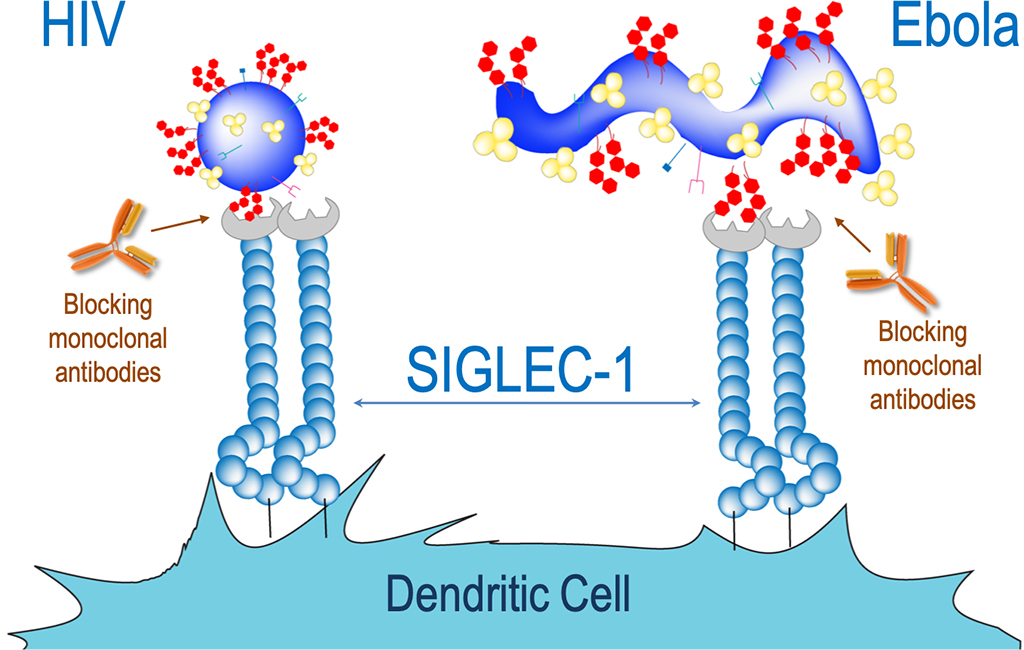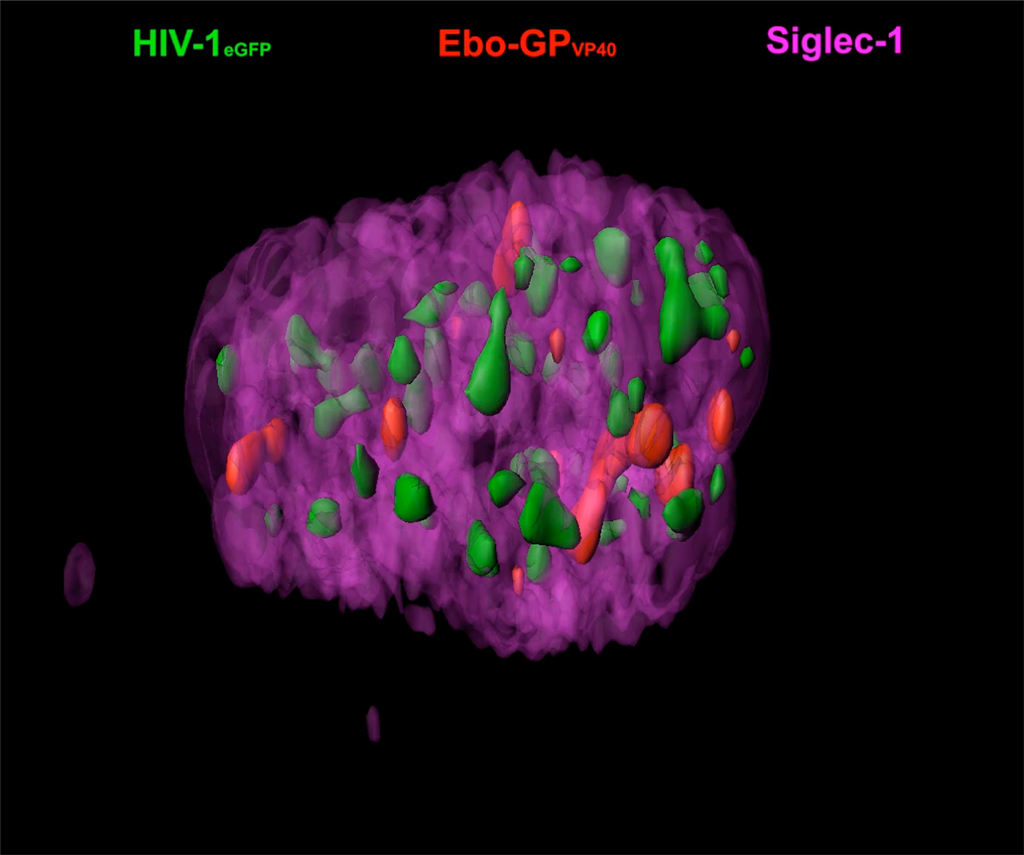Dendritic cells are the most potent antigen presenting cells found in humans and their immune function is key to initiate immunity against invading viruses. These cellular sentinels patrol distinct mucosae and upon infection, viral sensing triggers rapid innate immune responses that might initially contain viral spread. Activation of dendritic cells subsequently elicits their cellular migration towards lymphoid tissues, where they trigger a more selective immune response against the assaulting pathogens.
In 2012, while working on immune pathogenic mechanisms involving HIV-1 –the AIDS virus–, the retrovirology team at the IrsiCaixa AIDS Research Institute described a new interaction between specific glycolipids (dubbed gangliosides) in the viral membrane and the protein Siglec-1 (or CD169) on the dendritic cell membrane. The characterization of this new ligand-receptor interaction opened a wide range of translational possibilities, not only including HIV-1 control, but also other enveloped viruses.
Filoviruses, such as Ebola virus, cause a severe fever having a very high case fatality rate. Since 1976 several Ebola viruses cause outbreaks in humans. The largest one ever recorded occurred in West-Africa between 2014-2016, with 28,646 infected patients and 11,323 reported deaths. At that time, the research group was investigating other potential ganglioside-containing viruses that could exploit Siglec-1 as an attachment receptor in myeloid cells, which are in vivo targets of filoviruses. They have now found that Ebola virus-like particles also bind to Siglec-1 on activated dendritic cells upon recognition of their gangliosides.
This observation opens the door to develop pan-viral inhibitors based on this mechanism of action. The team has generated a series of monoclonal antibodies that specifically bind to Siglec-1. Blockage of the Siglec-1 receptor by anti-Siglec-1 antibodies halts Ebola viral uptake and cytoplasmic entry, offering cross-protection against other ganglioside-containing viruses such as HIV-1. As a result, two patents have been filed to protect these antibodies as potential therapeutic agents.
Reference

